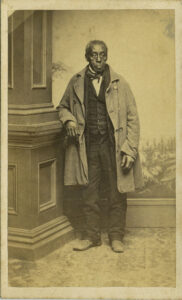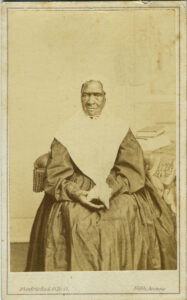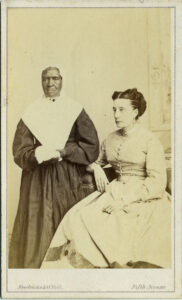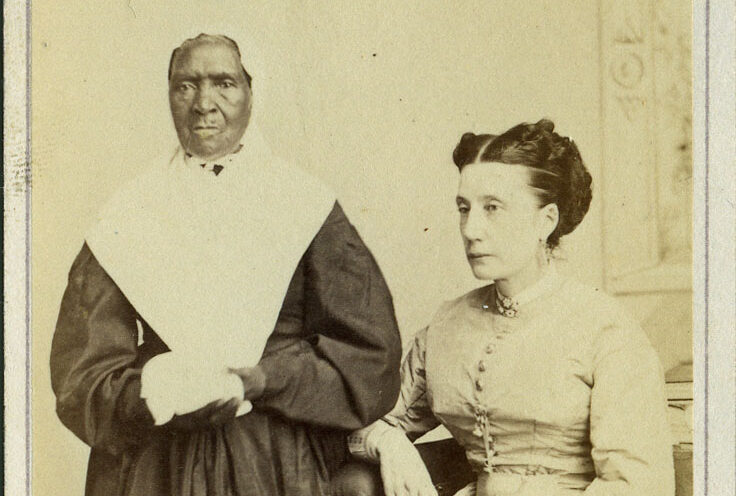The Lott Family Household In Brooklyn, New York
One destiny for slaves freed in the North lay in ongoing servitude to their former owners – and such was the case with “Old Fanny” and “Uncle Abraham” of the Lott family household in Brooklyn.
The Lott family migrates from Holland to New York around 1630. At the time, slave ownership is widespread among the Dutch, with blacks originally comprising about 20% of the state’s population. In New York city over half of all residents own at least one slave, and the Lott family owns twelve, according to the 1790 census records.
Construction of the Lott Family Household
In 1800 Hendrick I. Lott (1760-1840) builds a 22 room home on 245 acres of farmland in the Flatlands (Brooklyn) and moves in with his wife, Mary Brownjohn, daughter of a prominent family also from New York city. One of their offspring, a son, Johannes, marries Gashe Bergen in 1817, and fathers seven children. One is Henry DeWitt Lott (b. 1820), another, Eliza Lott (b.1828).
At some point, Henry Lott comes to own the slave Abraham, while Eliza owns Fanny. Abraham then weds Fanny, and they have at least one child, a daughter, Fannie Lew, who is owned by Elsie (Ray) Lott.
When slavery finally withers away around 1830 in New York, Abraham and Fanny transition from slaves to “coloured servants” of Henry and Eliza.
The Lott property remains a NYC landmark to this day
A trip into New York City by Eliza probably prompts the photograph above, taken by Fredericks & O’Neill of 5th Avenue, of an aging “Old Fanny,” standing beside the seated “Lizzie.” By the time it is taken, “Uncle Abraham,” whose photo originates at Isley’s Studio in Jersey City, has presumably passed away.
The Lott property remains a NYC landmark to this day, and restoration work shows that the slave quarters were well hidden within the building through a trap door in the kitchen. Artifacts found in this space include candle drippings, a mortared-over oven, a cloth pouch, oyster shell and corncobs, the latter arranged in a starburst pattern suggesting that they were used as part of West African religious rituals.
Conjecture also has it that a secret 6’x12’ room concealed behind a closet on the second floor of the Lott house may have been used in the 1840’s by run-away slaves moving north along the Underground Railroad.
Over 150 years have passed since Aunt Lizzie and “Old Fanny” posed for the camera, on their visit to NYC. But there they are, captured in time, forever symbolizing a limbo-like moment where some Black people in America were no longer enslaved, but not nearly all the way free and equal.



For More on the Lott Family Read Below:
Also see Friends of the Lott House
